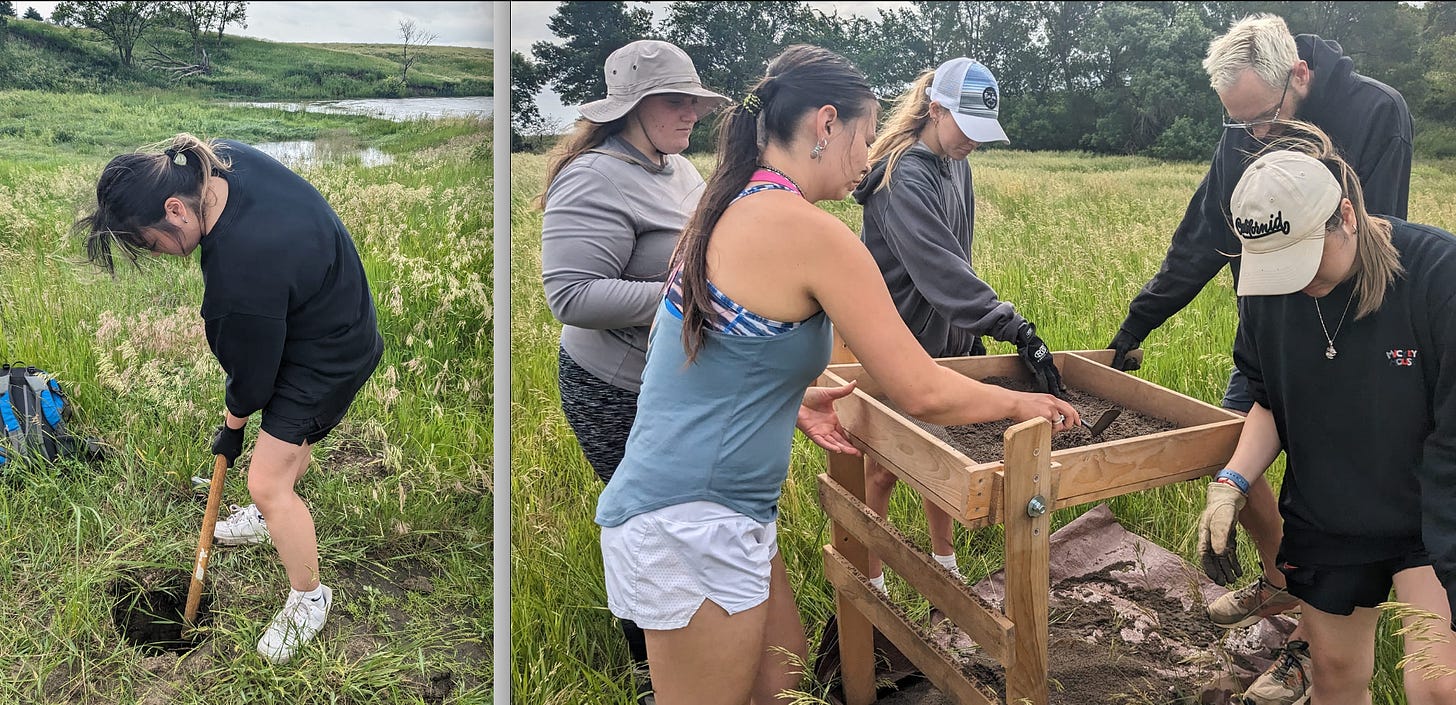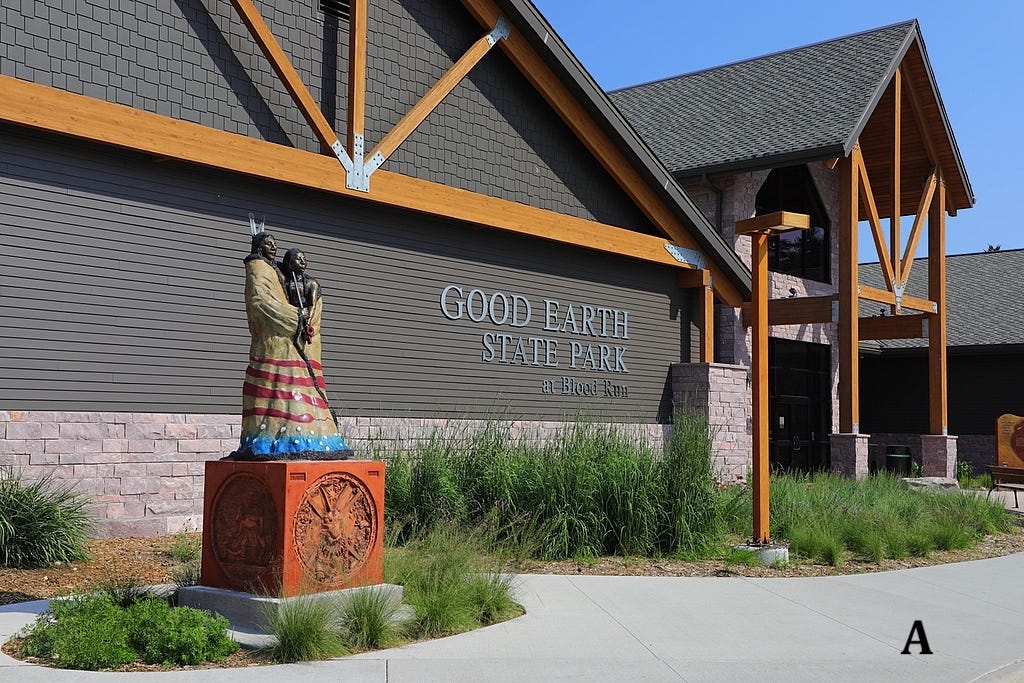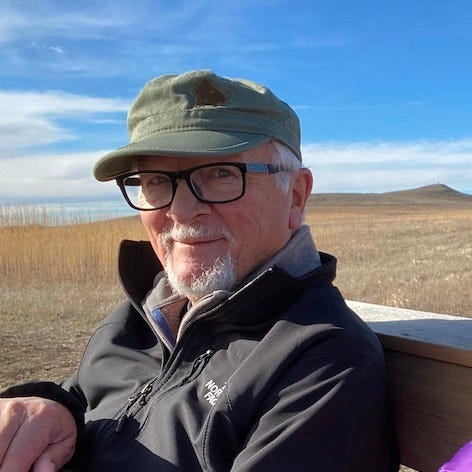Fall is a busy time of year! Corn and beans are harvested in the country and harvest festivals are celebrated in towns and cities. October is “Archaeology Month” and it includes “Earth Science Week” as well as “Indigenous People’s Day”. Did any of you hear about the group of Native Americans that rode horses from California to Washington DC? There was not much coverage in the legacy media, because the election and hurricanes drained all the oxygen from the story.
There were/are lots of meetings in October! This post reviews some of them that related directly to Blood Run National Historic Landmark and to Lone Tree Farm. These meetings are my excuse for this essay getting posted a week late. Also, there’s been lots of family activities and the weather has just been too dang nice to be indoors all of the time!
Figure 1----Field School participants at work on Lone Tree Farm.
The first meeting hasn’t happen yet and you all can get in on it because there’s a Zoom link available! This coming Tuesday, October 22 at 7:00 pm, Dr. Phyllis Johnson will describe what her class from Augustana University accomplished on Lone Tree Farm this past summer (around the flood). The talk is titled Working Towards a Collaborative Archaeology: Preliminary Results of the 2024 Augustana University Archaeological Field School. I think that a part of it will include how tribal people were involved in the project. The talk is sponsored by the Minnesota Archaeological Society and here’s the link. You have to register in advance and after registering you’ll get a meeting link. BUT, HEADS UP: it’s this coming Tuesday so you need to get it done now!
Figure 2----Gray and Nora Shurr displaying their precious discoveries.
These two grandkids both discovered these two treasures right in front of me! I saw the beautiful “blades” at exactly the same time as they did, but they moved faster and were closer to the ground. So, they are the official collectors. I gave a talk about these artifacts at the South Dakota Archaeological Society earlier this month and will give another one at the Iowa Archaeological Society meeting next weekend. Turns out that these blades are found in sites in both central and eastern South Dakota and in northwestern Iowa (specifically, Blood Run National Historic Landmark). They have distinctive shapes that possibly relate to how they were used by the indigenous people. There are no links available for these talks, but I’ll tell you all about it in later Substack posts related to Lone Tree Farm archaeology.
Figure 3----Visitor’s Center at Good Earth State Park.
Twice a year, stakeholders in Good Earth State Park and Blood Run NHL hold a meeting to exchange information about activities in both South Dakota and Iowa. This fall that meeting of the Bistate Advisory Group was held on October 1 and there’s a link for an audio recording. However, the recording doesn’t start until 27:15 minutes into it and quality is not always very good. So, here’s my summary….On the South Dakota side of the Big Sioux River, the programming in the state park continues to be a big success. Plans for a park expansion to the south have changed because it has been decided to sell Spring Creek Golf Course, as I understand it. On the Iowa side of the river, contracts have been awarded for building the crossing over Blood Run Creek and for removing the cement foundation currently surrounding the spring which is a Sacred Site. The money for these projects came from grants obtained by both a state agency and by a local citizen’s group.
There’s an excellent new summary and update on what’s been going on in the Blood Run NHL at this link. At least three or four separate state and county agencies and a couple of independent citizens’ groups have been involved with the NHL over the years. My personal opinion is that the resulting confusion has led to slow-moving progress and to possible poor communication with tribal groups. Maybe the dynamics in this complex organizational environment might make for an interesting study in cultural anthropology? At any rate, this recent article in the Iowa Capital Dispatch is done by a professional journalist and it provides a good independent insight into what is needed and what has happened (or not) to address those needs.
Figure 4----An old guy and Spirit Mound near Vermillion, SD.
This post started with an item from the Minnesota Archaeological Society and it’s finishing up with another one. Technically, their annual meeting wasn’t in October, but on September 27 when I received the Hill-Lewis Award. Actually, I wasn’t there because we had conflicts with scheduled family events. The award is intended to recognize significant contributions by avocational (aka amateur) archaeologists to Minnesota archaeology. Here’s the “official” version of the announcement:
The Board of The Minnesota Archaeological Society has named Dr. George Shurr recipient of the 2024 Hill-Lewis Award. The Hill-Lewis Award is named in honor of Alfred J. Hill and Theodore H. Lewis, financial sponsor and field surveyor respectively, who undertook an ambitious archaeological survey of Midwestern US earthworks. Though neither was a professional archaeologist, their contribution to Midwestern archaeology stands today as a shining chapter in understanding America’s deep past.
I’m grateful to the Society for the recognition and to Dr. Phyllis Johnson who made the original nomination. One of the first projects that I did, used measurements on mounds at Blood Run that Theodore Lewis made back in the 1880s. Actually, I should review that study sometime in this Substack venue because it estimates how fast the mounds are eroding.
Acknowledgements: Thanks to Phyllis Johnson, Gerald Schnepf, and Michael Plummer for providing links used in this post.








Congrats on the award! I hope you'll record the Zoom talk as I have a competing event at that time. I'd love to see it. Great photo of the grands holding their discoveries.